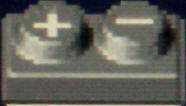 |
We Have Activation!
Once the car battery is (somehow) connected to the rest of the system, there is still the issue of keeping it charged. Unlike the electric car with enormous batteries, the Prius has, in effect, a hundred or so small batteries in series. They supply high voltage. They supply high current. But they won't do it for long. (For example, the Prius only has enough stored electric energy to drive for perhaps a mile.) Therefore, within less than a minute after your house starts draining power from the battery, the car must be turned on.
This is more of a problem than it seems. You normally turn on the car by inserting the key (or being in the car with the smart key system) and pressing the Start button. Unless you want to live in the car while hoping for a power failure, there needs to be a different solution. Some possibilities:
- Leave the key in the car and use a solenoid to press the start button by external command
- Leave the key in the car and activate the button with a relay connection that intercepts the button contacts
Note how both of these suggestions begin with "Leave the key in the car." This is a terrible idea if you park outside, and not a great one even if you park in your garage. (Remember your garage may open automatically to avoid carbon monoxide buildup.) One possible resolution of this security issue is to simply remove the key after the car starts - it will keep running in that case. Another, at least with the smart key system, is to put the key very near the car but in a secure container.
Resolving the other part - starting the car - should be less of a challenge. You can easily connect a very simple circuit to a portion of your AC that isn't supplied by the Prius, and have that briefly close a relay if AC power fails for, say 10 seconds or more. (It would also need to be smart enough to turn the car off when power returns.) This is conceptually and practically simple. The key problem is the key problem.
Still to be done...
This page only discusses the issues. I haven't actually implemented anything yet. More later.